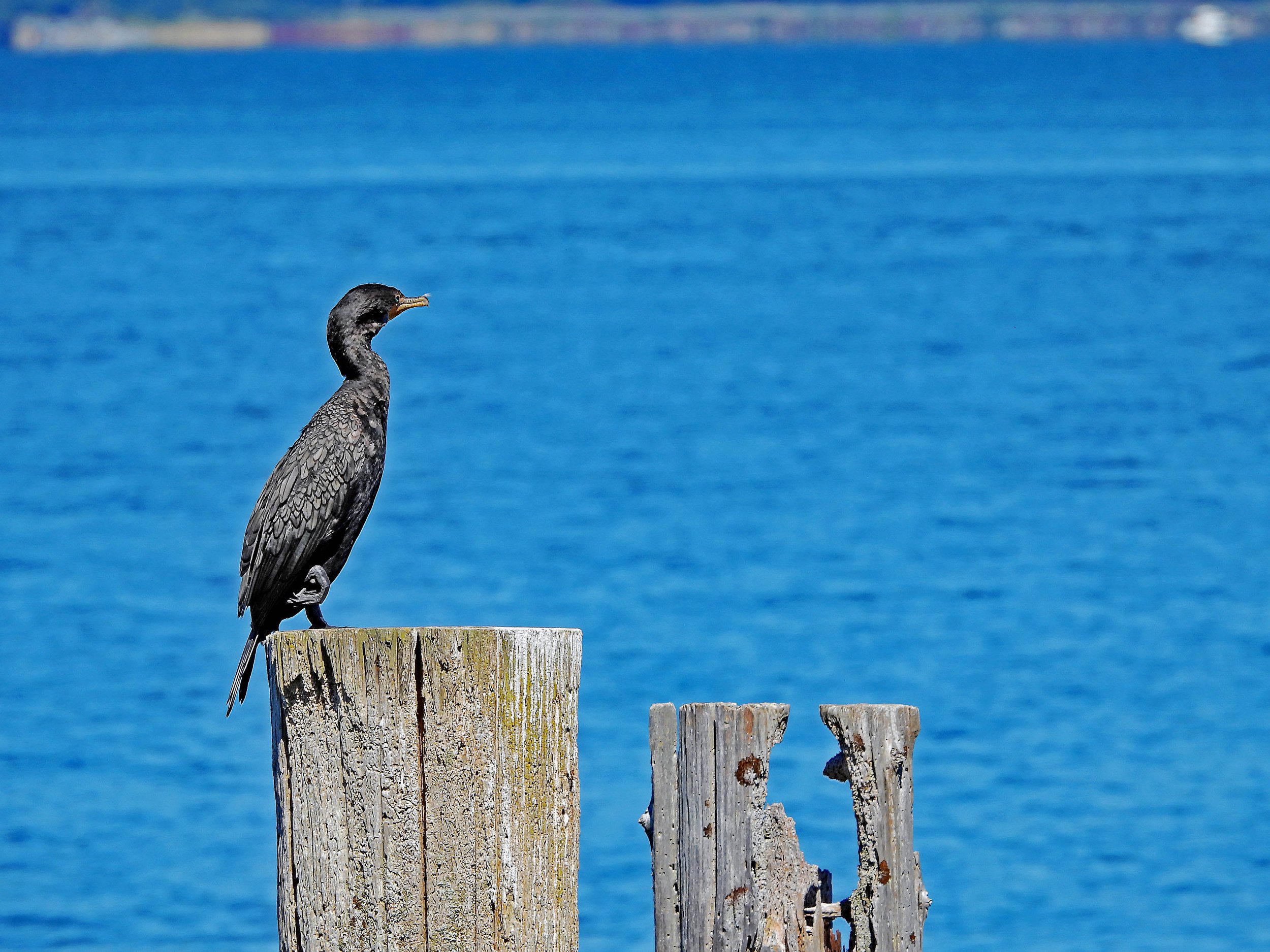Nikon P1000
There will be a few Nay Sayers when it comes to this particular camera, especially those who are, “Evolved,” as photographers go. And that’s okay…it really is okay. Maybe they don’t like the fact that it only has 16 MP. Whatever their reasoning…it really is okay. Personally, I have had allot of success with this camera and, keeping within budgetary constraints, would like to share with you, with some depth, as to why it can be a great camera.
Let me first preface this particular blog with this statement. Always, and whenever possible, use a tripod! Had I taken the time to do that, I would have more, usable shots of birds and mammals in my arsenal of photos. The photos posted today are all handheld and, in some cases, a tripod was not possible to use.
This shot to the left, is of a Double crested Cormorant, taken in Astoria, Oregon. There was lots of detail to be had in its feathers and the perch that it stood on had lovely color from being weathered and from the moss growing on it. Not a bad shot for 16 MP on a bright, sunny day.
After my preface above, I thought I would post this shot to the right. This is a portraiture of a Red-tail Hawk. Where I took this, within the Ridgefield Wildlife Preserve, you cannot use a tripod..you can’t even get out of your vehicle as you’re driving along. So there is allot of bouncing back and forth between the driver’s and passenger sides of the car. If you have a passenger with you, if you have a backseat then place them back there. IF you both are shooting photos, then you both can lean back and forth, from side to side, without getting in each other’s way. The more you extend the lens, bringing far away things up close, the more difficult it is to get everything you want into frame. Hence the preface. If you have to handhold this beast, then do the very best you can…take a deep breath in, get what you want in the frame, let out your breath and snap the photo. Easy…right?
Now I know that I have used this photo before, within these pages, but it bears well here. This was also taken at the Ridgefield Wildlife Preserve in Ridgefield, Washington and it was taken, handheld with me leaning into the passenger seat of my car. I got such detail in the bird, in what the bird is perched on, in everything that makes, or adds to, the photo. I even like the lighting, that early morning lighting is the best! These guys are fast movers and they don’t stay long in any one place so to crack one off with the P1000 and have it turn out the way it did, then I’m glad to have bought it.
The P1000 also makes a great camera when you’re considering self-preservation in the photos that you take. This large mammal to the right is a rather mature, and grumpy all day, bull moose. This was shot in Grand Teton National Park, Wyoming, and with these mammals it is recommended that you stay a minimum of 40 yards away. The P1000 had no issues in getting close to this guy and it almost appears like…well, like he’s smiling at me. In any event, I could stay well enough away AND handhold this camera and get amazing shots with it.
For being a hybrid camera, having all the fun of a fully manual camera and being a point and shoot, a camera that has a fixed lens, You start out with a pretty good 24mm wide angle…and then you can zoom out to 3000mm. So it works pretty well for getting shots like this female Prong Horn Antelope. She, along with others of the same type, were grazing in this field that was near Mormon Row in Grand Tetons National Park, and the wide angle worked well in capturing this beauty and the Autumnal background.
This last photo I took in Rome, Italy. My wife and I were walking around the city and happened upon this square block of ruins. I don’t recall what ruins they were, I don’t believe it was as infamous as other ones are in that city, but we noticed a whole bunch of cats lounging around these ruins. We followed the guard rail that went around the ruins and discovered that these ruins were turned into a cat sanctuary. They accepted donations in the form of money OR food. There was even a veterinarian that volunteered her time in the caring and maintenance of the felines. Since you could not walk among the cats, or the ruins, the P1000 did great for zooming in and getting some great shots.
All in all, the P1000 is a pretty versatile camera and it is certainly more affordable than those giant lenses you can by, for 5 figures, it’s easier to use and get out those quick shots. I believe you can purchase one for under a grand nowadays and if you’re into wildlife photography it is a great investment…especially if you’re just starting out and want to get into some great zoom photography. If you want to go to the next step, purchase this baby and get some memorable shots without having big, bulky equipment to cart around and set-up. If anyone goes out and gets one, let me know! And, if anyone has any questions about this rig, I’m happy to answer all inquiries. That’s it for me then. I hope this gets your creative juices flowing and you want to go capture some wildlife. What ever your plans, take care of yourselves and each other and I’ll see you all in the next installment…Be and travel well!






